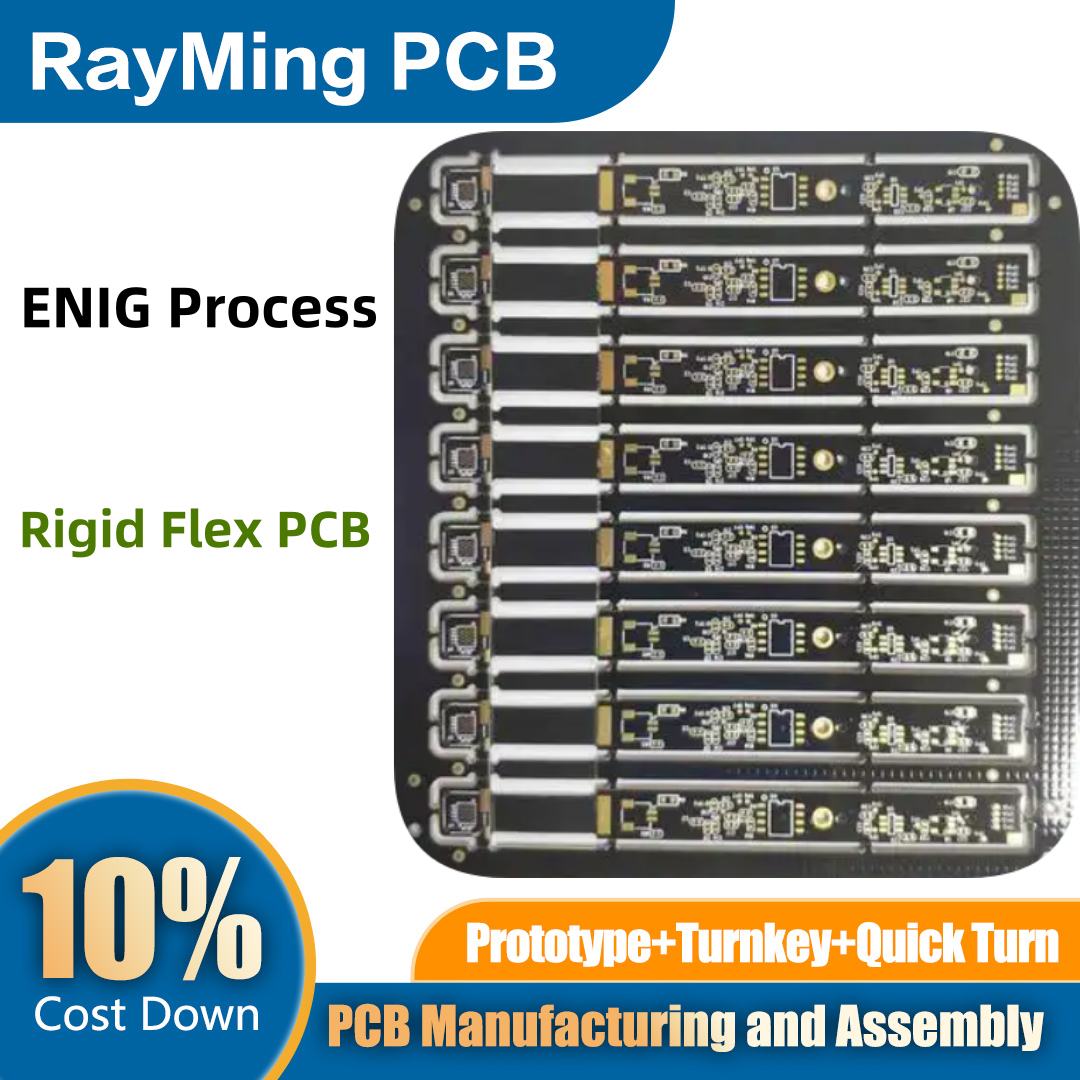The Electroless Nickel Immersion Gold (ENIG) process for Rigid-Flex PCBs is a sophisticated surface finish technique that bridges the gap between rigid and flexible circuit technologies, offering superior performance and reliability.
Key aspects of the ENIG process for Rigid-Flex PCBs include:
- Uniform plating across both rigid and flexible areas
- Excellent solderability and extended shelf life
- Compatibility with fine-pitch components
- Enhanced flexibility without compromising electrical performance
- Superior corrosion resistance for harsh environments
The process involves depositing a layer of electroless nickel (3-6 µm) followed by a thin layer of immersion gold (0.05-0.1 µm) on both rigid and flexible substrates. Special care is taken to ensure consistent plating across the transition zones between rigid and flexible areas.
ENIG for Rigid-Flex PCBs excels in applications requiring a combination of high component density and mechanical flexibility, such as smartphones, wearable devices, and advanced medical equipment.
While more complex and costly than traditional finishes, the ENIG process for Rigid-Flex PCBs offers unparalleled durability and performance in compact, flex-rigid designs. It’s particularly valuable in high-reliability applications where space is at a premium and traditional connectors are impractical.





